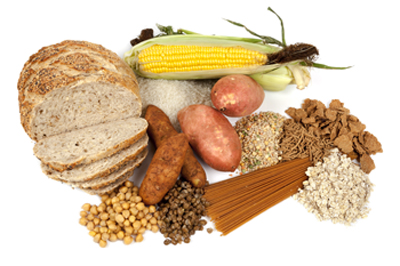Eating, Diet, & Nutrition for Hemorrhoids
What should I eat if I have hemorrhoids?
Your doctor may recommend that you eat more foods that are high in fiber. Eating foods that are high in fiber can make stools softer and easier to pass and can help treat and prevent hemorrhoids. Drinking water and other liquids, such as fruit juices and clear soups, can help the fiber in your diet work better. Ask your doctor about how much you should drink each day based on your health and activity level and where you live.
The Dietary Guidelines for Americans, 2020–2025 recommends a dietary fiber intake of 14 grams per 1,000 calories consumed. For example, for a 2,000-calorie diet, the fiber recommendation is 28 grams per day.
The amount of fiber in a food is listed on the food’s nutrition facts label. Some fiber-rich foods are listed in the table below.
| Fiber-rich Foods | |
|---|---|
| Food and Portion Size | Amount of Fiber |
| Grains | |
| 1/2 cup high-fiber bran, ready-to-eat cereal | 14.0 grams |
| 1 cup of shredded wheat, ready-to-eat cereal | 6.2 grams |
| Fruits | |
| 1 medium pear, with skin | 5.5 grams |
| 1 medium apple, with skin | 4.8 grams |
| 1 cup of raspberries | 8.0 grams |
| 1/4 cup of prunes | 3.1 grams |
| Vegetables | |
| 1 cup of green peas, cooked | 8.8 grams |
| 1 cup of collard greens, cooked | 4.8 grams |
| 1 cup of sweet potato, cooked | 6.3 grams |
| 1 medium potato, baked, with skin | 3.9 grams |
| 1 cup of winter squash, cooked | 5.7 grams |
| Beans | |
| 1/2 cup navy beans, cooked | 9.6 grams |
| 1/2 cup pinto beans, cooked | 7.7 grams |
| 1/2 cup kidney beans, cooked | 5.7 grams |
A doctor or dietitian can help you learn how to add more high-fiber foods to your diet.

What should I avoid eating if I have hemorrhoids?
If your hemorrhoids are caused by chronic constipation, try not to eat too many foods with little or no fiber, such as
- cheese
- chips
- fast food
- ice cream
- meat
- prepared foods, such as some frozen and snack foods
- processed foods, such as hot dogs and some microwavable dinners
This content is provided as a service of the National Institute of Diabetes and Digestive and Kidney Diseases
(NIDDK), part of the National Institutes of Health. NIDDK translates and disseminates research findings to increase knowledge and understanding about health and disease among patients, health professionals, and the public. Content produced by NIDDK is carefully reviewed by NIDDK scientists and other experts.

